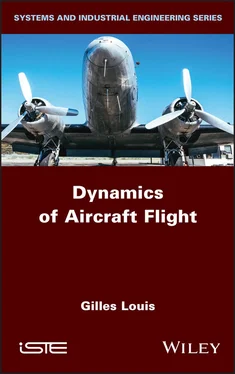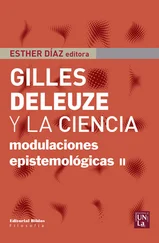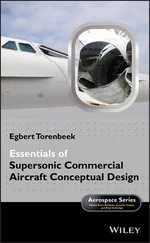1 Cover
2 Title Page Series Editor Jean-Paul Bourrières
3 Copyright First published 2022 in Great Britain and the United States by ISTE Ltd and John Wiley & Sons, Inc. Apart from any fair dealing for the purposes of research or private study, or criticism or review, as permitted under the Copyright, Designs and Patents Act 1988, this publication may only be reproduced, stored or transmitted, in any form or by any means, with the prior permission in writing of the publishers, or in the case of reprographic reproduction in accordance with the terms and licenses issued by the CLA. Enquiries concerning reproduction outside these terms should be sent to the publishers at the undermentioned address: ISTE Ltd 27-37 St George’s Road London SW19 4EU UK www.iste.co.uk John Wiley & Sons, Inc. 111 River Street Hoboken, NJ 07030 USA www.wiley.com © ISTE Ltd 2022 The rights of Gilles Louis to be identified as the author of this work have been asserted by him in accordance with the Copyright, Designs and Patents Act 1988. Any opinions, findings, and conclusions or recommendations expressed in this material are those of the author(s), contributor(s) or editor(s) and do not necessarily reflect the views of ISTE Group. Library of Congress Control Number: 2022932439 British Library Cataloguing-in-Publication Data A CIP record for this book is available from the British Library ISBN 978-1-78630-719-4
4 Foreword
5 Introduction
I.1. Definition of axes I.1. Definition of axes Let us use the direct trihedron defined in Figure I.1. Figure I.1. Direct trihedron Thus, the pitch, roll and yaw axes are defined as follows.
6 1 Use of Aerodynamic Forces to Control the Trajectory of an Aircraft
1.1. Definitions
1.2. Pitch control
1.3. Yaw control
1.4. Roll control
1.5. The Mach: subsonic, transonic and supersonic speeds
7 2 Aerodynamic Forces and Moments and their Derivatives
2.1. Definitions
2.2. Aerodynamic forces
2.3. Aerodynamic moments
2.4. Major aerodynamic derivatives
8 3 Wind Tunnel
3.1. Description of wind tunnel tests 3.2. Stall
3.3. Calculation of the maximum stress applied to an aircraft wing in a wind tunnel
9 4 Trihedron
4.1. Writing convention 4.2. Definitions of trihedrons
4.3. Change of reference
4.4. Relation between trihedra
4.5. Relative positions of the various trihedra
10 5 Movement of a Solid
5.1. Rotation of a solid around a fixed point 5.2. Kinematics of a solid
5.3. Reference framework
5.4. Components of the instantaneous velocity vector of the aircraft reference (O, ie, je, ke)E with respect to the local geographic reference (O, ilgt, jlgt, klgt)LGT in the aircraft reference
5.5. Equations of accelerations and forces in the aircraft frame(O, ie, je, ke)E
5.6. Determination of load factors in the aircraft reference (O, ie, je, ke)E
5.7. Case where the speeds and accelerations are provided at a point other than G
5.8. Coordinates of the aerodynamic speed in aircraft axes
5.9. Equations of moments in the aircraft frame (O, ie, je, ke)E
5.10. Forces and moments applied to the aircraft
11 6 Aircraft Characteristics
6.1. Aerodynamics problems posed by aircraft 6.2. Load factor
12 7 Aircraft Simulation Model
7.1. Simulation model of the atmosphere
7.2. Propulsive coefficients
7.3. Mass coefficients
7.4. Aerodynamic coefficients
7.5. Equations of motion
7.6. Introduction of wind
13 8 Processing of Trajectography Information
8.1. Telemeasured parameters
8.2. Smoothing, first derivation and second derivation
8.3. Performance calculation
8.4. Aerodynamic route and slope
8.5. Determination of the angle Ψ
8.6. Load factors in the aerodynamic trihedron (O, Xa,Yaf, Zr)
8.7. Processing of data from the inertial unit (in the aircraft frame)
8.8. Determination of some aerodynamic parameters
8.9. Determination of load factors (nx1, ny1, nz1) in the aircraft trihedron
8.10. Determination of CY and Cz
8.11. Determination of the total incidence
8.12. Determination of the longitudinal attitude compared to the local horizontal plane
8.13. Determination of drag coefficients
8.14. Determination of the pushing force
14 9 Quaternion Methods
9.1. Goal 9.2. Reminder of the axis change formulas using Euler angles
9.3. Olinde-Rodrigues’s formulas: definition of quaternions
15 Glossary
16 List of Abbreviations
17 References
18 Index
19 End User License Agreement
1 Introduction Figure I.1. Direct trihedron Figure I.1. Direct trihedron Thus, the pitch, roll and yaw axes are defined as follows.
Figure I.2. Roll axis (rotation around the X axis) I.1.1. Roll axis Figure I.2. Roll axis (rotation around the X axis)
Figure I.3. Yaw axis (rotation around the Z axis) I.1.2. Yaw axis Figure I.3. Yaw axis (rotation around the Z axis)
Figure I.4. Pitch axis (rotation around the Y axis) I.1.3. Pitch axis Figure I.4. Pitch axis (rotation around the Y axis)
2 Chapter 1 Figure 1.1. Horizontal plate. For a color version of this figure, see www.iste.c...
Figure 1.2. Inclined plate. For a color version of this figure, see www.iste.co....
Figure 1.3. Aerodynamic resultant. For a color version of this figure, see www.i...
Figure 1.4. Trihedron related to the aircraft’s center of gravity
Figure 1.5. Wing section. For a color version of this figure, see www.iste.co.uk...
Figure 1.6. Lift
Figure 1.7. Drag
Figure 1.8. Deflection of air streams. For a color version of this figure, see w...
Figure 1.9. Effects of induced velocity
Figure 1.10. Lift distribution
Figure 1.11. Equilibrium in horizontal flight
Figure 1.12. Lateral stabilityFigure 1.13. Induced roll motionFigure 1.14. Load factorFigure 1.15. Pitch controlFigure 1.16. Balanced level flightFigure 1.17. Negative pitchFigure 1.18. Positive pitchFigure 1.19. Yaw controlFigure 1.20. Zero yawFigure 1.21. Right yawFigure 1.22. Left yawFigure 1.23. Roll controlFigure 1.24. Right rollFigure 1.25. Left roll
3 Chapter 2Figure 2.1. Marginal vortices
4 Chapter 3Figure 3.1. Wind tunnel testFigure 3.2. Evolution of lift as a function of the angle of attackFigure 3.3. Model in wind tunnel
5 Chapter 4Figure 4.1. Reference trihedra of the machine. Passage from the aircraft referen...Figure 4.2. Reference trihedrons linked to the plane and the trajectory. In blac...Figure 4.3. Reference trihedra defining the angular position of the aircraft in ...Figure 4.4. Position of the aircraft trihedron with respect to the reference tri...Figure 4.5. Position of the aerodynamic trihedron with respect to the terrestria...Figure 4.6. Position of the aerodynamic trihedron with respect to the aircraft t...Figure 4.7. Position of the aircraft trihedron in relation to the balance trihed...
6 Chapter 5Figure 5.1. Rotation of a solid around a fixed point. For a color version of thi... Figure 5.2. Kinematics of a solid
Figure 5.3. Change of reference frameworkFigure 5.4. Instantaneous velocity vector componentsFigure 5.5. Solid admitting planes of symmetry
7 Chapter 8 Figure 8.1. Trihedron related to the route and the aerodynamic slope. The points...
Figure 8.2. Aerodynamic speed trihedron. The points (X a, X 2, Y a, Y 1), (X aF, X h, ...Figure 8.3. Trihedron linked to local vertical. For a color version of this figu...
Читать дальше












